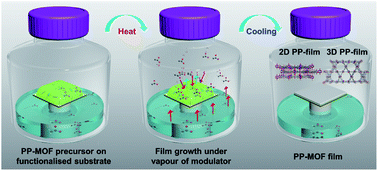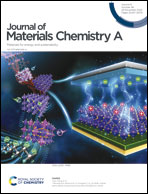Porphyrin based metal–organic framework films: nucleation and growth†
Abstract
Integration of porphyrin based metal–organic frameworks (PP-MOFs) on a solid surface has emerged as a key advancement in terms of exploring their promising applications. However, a great challenge remains unmet when it comes to successfully fabricating a PP-MOF film with crystallinity, controllable orientation, adjustable morphology and thickness, all sustained in one. Herein, for the first time, vapor-assisted conversion (VAC) was developed as a facile and versatile technique to fabricate functional PP-MOF films on various substrates related to different application requirements. To understand the nucleation and growth mechanism, a number of fabrication methods were leveraged to prepare the PP-MOF films, thanks to an assortment of PP-MOFs varying from two-dimensional (2D) to three-dimensional (3D) scaffolds. The studies show that PP-MOF films are likely to display different nucleation and growth processes following different deposition approaches. This study demonstrates the pros and cons of different methods in the fabrication of functional PP-MOF films, potentially offering critical tools and reference points for the preparation of next-generation functional MOF thin films in general.



 Please wait while we load your content...
Please wait while we load your content...